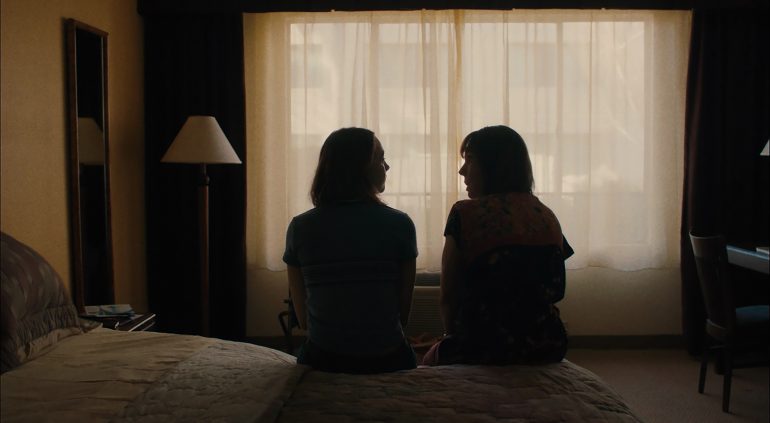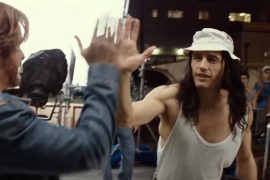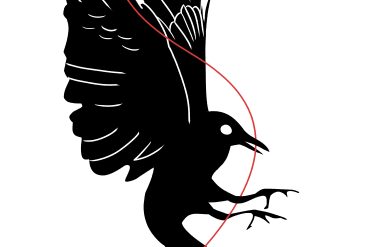“Don’t you think they’re the same thing? Love… and attention?” Sarah Joan says, smiling at Lady Bird. Lady Bird feels her heart sink a little, but then… airy. Something in her shifts. She doesn’t know it yet but… Sarah Joan is right.
“Lady Bird” (2017) is a film written and directed by Greta Gerwig. Starring Saoirse Ronan (Little Women) and Laurie Metcalf (“Roseanne”), “Lady Bird” tells the story of Christine “Lady Bird” McPherson (Ronan), a high school senior that’s on the precipice of the next chapter of her life. Her mother, Marion (Metcalf), clashes with her during this time, yet holds her very close. As Lady Bird prepares for her future, she begins to realize that her mother’s lessons may have some truth to them after all.
As Lady Bird traverses her last year of high school and her rocky relationship with her mother, she goes through friendship drama with her best friend Julie (Beanie Feldstein, “Booksmart”), dates two boys—the friendly, goofy Danny (Lucas Hedges, “Boy Erased”), and the aloof and jerkish Kyle (Timothée Chalamet)—and struggles to figure out where she’ll go for college after she graduates. But she knows for sure that it’s not going to be in Sacramento; “No way. Sorry, but… Yes. No way”, she says at one point during the film.
I’ve seen “Lady Bird” multiple times throughout my life, and Gerwig’s portrayal of Sacramento is something that continues to deeply resonate with me. The sense of place is something that can only come from a writer and visionary who’s lived the very life that Lady Bird has. It’s a kind of writing that deeply resonates with my own upbringing from the midwest. There are several shots throughout the film that almost make you think that Gerwig may have filmed those herself, as a love letter to the city she called home.
“Lady Bird” was written over the course of many years, but was finished in 2015. In an interview, Gerwig described the early drafts of the film being 350 pages. She also described the process as wanting to write about home and the question of “What does home mean, and the way that it’s difficult to see it clearly when you’re there, and it’s not until you’re gone that you look back and understand what it was”. This quote is one of Gerwig’s that I enjoy the most. She, like I, had come from some place, and being away from there gave me a different perspective to my place there, a perspective I couldn’t gain while being there.
“Lady Bird” is one among many other films of the newly growing autofiction genre. Autofiction started out as a literary genre, short for autobiographical fiction. In it, the writer combines elements of their actual life with fictional information, characters, places, and events. Though, what is fiction and what is truth is not always clear. “Lady Bird” is one of the many films that have been released in the 2010s and now 2020s that involve the writers and directors of these films representing either central characters or the protagonist in the film, although some aspects are altered for cinematic purposes.
To me, this carves out a new genre: Cinematic autofiction. Other examples of these films include Celine Song’s “Past Lives”, Savanah Leaf’s “Earth Mama”, and Charlotte Wells’ “Aftersun”, all contemporary examples, but go as far back as Andrei Tarkovsky’s mesmerizing “Mirror” from 1976, and even further. All of these films have deep ties to the writer or director of each of them, each telling a tale of their lives where they have intertwined cinematic fiction with their memories, allowing themselves to have closure on parts of their lives they otherwise may not have been able to. With “Lady Bird”, Gerwig makes peace with her growing up in Sacramento and her relationship with her mother.
Another striking element of the film that I find myself revisiting again and again is the screen chemistry between Metcalf and Ronan. The generational differences between Marion and Lady Bird make for such insightful look into the zeitgeist of mothers and daughters in the early 2000’s, and the way their on screen chemistry demonstrates this is a demonstration of Gerwig’s superb storytelling skills, both on the screen, and through her writing.
Motherhood surrounds “Lady Bird”. Marion’s complex relationship with her daughter stems from her past being raised by an abusive, alcoholic mother herself and it’s evident that Marion is trying to not repeat her mother’s mistakes, but at times she simply fails. The way she treats Lady Bird could be viewed as emotionally abusive at times—a particular scene later in the film with a painful silent treatment instantly comes to mind—yet also the way she dexterously handles Lady Bird at times, moments where she truly deeply wants to be the right mother for her… It’s watching her sewing Lady Bird’s prom dress in the quiet suburban kitchen in the dead of night, or knowing that everything Marion is doing is so that Lady Bird can traverse the world as the best version of herself. There’s so much about moving and journeying that comes with motherhood, and that translates into the film. A journey from home requires attention to detail and awareness of the new world around you. It also requires a certain kind of love. But motherhood is also a new world full of new awareness, and new love, new attention. And as Sarah Joan said, those two things may not be so different, love and attention.
“Lady Bird” is available on VOD or streaming.





